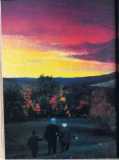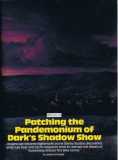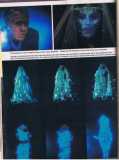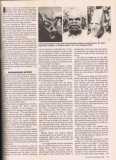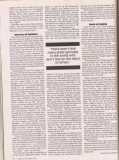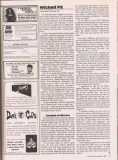It wasn't until after shooting was completed on Ray Bradbury's Something Wicked This Way Comes that Lee Dyer's special visual effects team was called into action. Post-production is not the best time to begin effects work on an effects-oriented fantasy film, but Lee Dyer frankly admits that the studio had no choice.
"I was working on TRON at the time, 10-12 hour days, seven days a week. My effects animation department is the only one here at the studio which works with live action, so when director Jack Clayton got into full swing on Something Wicked, no one was available," Dyer confesses.
"Certainly, Something Wicked is a a film which should have been storyboarded from the beginning. It wasn't. So, we went back in during post-production at a time when the studio wasn't fully occupied on TRON and the various EPCOT films and added four entirely new sequences. We storyboarded them thoroughly and I personally went over all of the new ideas with Clayton. What he didn't agree with, we talked through — ultimately compromising in some way to reach agreement. [Disney Vice-President of Production] Tom Wilhite was really the driving force behind putting all this together," he continues.
Animations of Evil
The first of the major sequences added to the film was the opening autumn countryside scenes lensed in Vermont in fall 1982. Not only was live action involved, but the Disney matte department was called upon to help establish the town itself nestled in the New England mountains. Lee Dyer explains that this new footage established the autumn season, the locale and the fact that Green Town is a real community filled with people other than the story's main characters. "Jack shot his film on the Disney back lot and on the soundstages so these shots serve so 'open up' the film a little."
In Jack Clayton's original edit of the film, the boys discover Mr. Dark's carnival already assembled in the meadow. "I wanted to see the carnival come together by itself," Dyer reveals. "We could have done this in several ways, but we thought that in order to give the sequence a different look, it might be a good idea to use computer animation and to get MAGI involved. MAGI, the company that did a great deal of work on TRON for us [STARLOG #62], wanted to try simulating live action."
MAGI was assigned to create the shapes and moves for the carnival train, and its transformation into the completed carnival. Disney animators were enlisted to create the sequence's organic effects, elements which computer animation does not do particularly well such as blowing leaves and flapping tent canvas.
The sequence was planned to last for almost two minutes. MAGI's challenge was to blend its work in with both the hand-drawn animation and the look of the remainder of the film. MAGI technicians created programs to eliminate the "crisp" look of computer animation so that it would not call attention to itself. Unfortunately, the completed work didn't meet the expectations of Jack Clayton and the rest of the production team, so the entire carnival computer animation sequence was deleted from the movie before its release.
Though the carnival's genesis is absent from the film, its apocalypse survives as the story's climax. In Clayton's original version, the boys run away from Mr. Dark and his Pandemonium Shadow Show, stopping only to look back at a matte painting of the destroyed carnival. Lee Dyer was looking for something more convincing.
[…]
